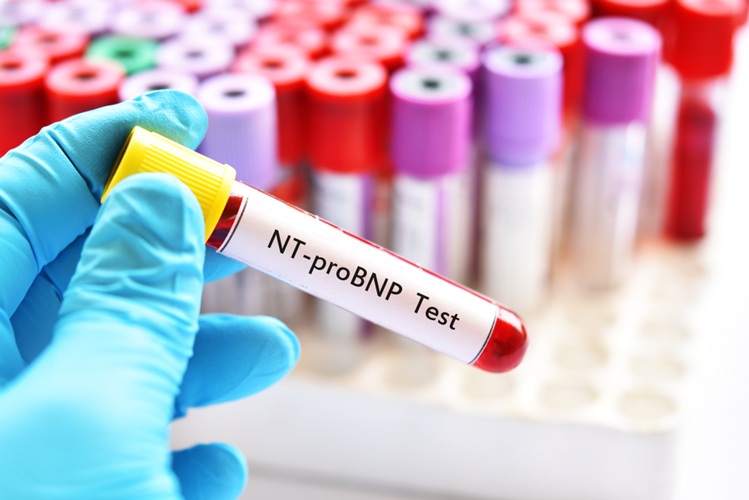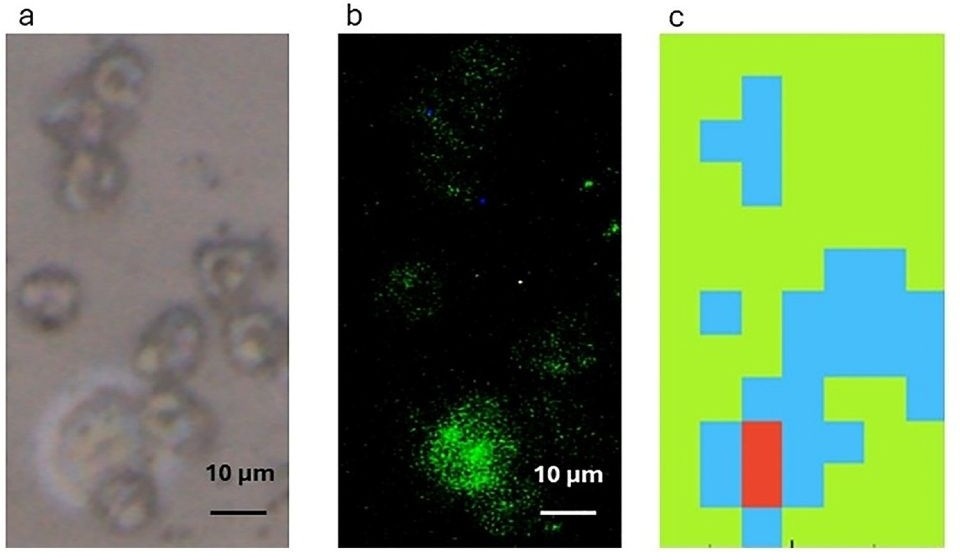Traditional Chinese Herbs Found to Suppress Progression of Diabetes
|
By LabMedica International staff writers Posted on 28 Jan 2014 |

Image: According to a new study, the ability of Tianqi, a Chinese herbal medicine, to reduce the risk of developing diabetes, is similar to that of diabetes drugs, metformin and acarbose (Photo courtesy of the University of Chicago).
Traditional Chinese herbal medicines have the potential for slowing the progression from prediabetes to a clinical diabetes diagnosis, according to new research.
An individual who has developed raised blood sugar levels is diagnosed with prediabetes, but glucose levels have not yet been elevated to the point of developing type 2 diabetes. Individuals who are prediabetic are faced with an increased risk of developing type 2 diabetes as well as stroke and heart disease.
“With diabetes evolving into a serious public health burden worldwide, it is crucial to take steps to stem the flood of cases,” said one of the study’s authors, Chun-Su Yuan, MD, PhD, from the University of Chicago (IL, USA). “Patients often struggle to make the necessary lifestyle changes to control blood sugar levels, and current medications have limitations and can have adverse gastrointestinal side effects. Traditional Chinese herbs may offer a new option for managing blood sugar levels, either alone or in combination with other treatments.”
During the double-blind, randomized, placebo-controlled trial, 389 participants at 11 research sites in China were randomly assigned to take either a capsule containing a combination of 10 Chinese herbal medicines or a placebo. Study participants, for the duration of one year, took capsules of either the Chinese herb mixture, called Tianqi, or the placebo three times per day before meals. All participants received one month of lifestyle education at the beginning of the trial and met with nutritionists several times during the study. Study participants’ glucose tolerance was measured on a quarterly basis.
At the end of the trial, 36 participants in the Tianqi group and 56 in the placebo group had developed diabetes. The analysis found taking Tianqi reduced the risk of diabetes by 32.1% compared with the placebo, after adjusting for age and gender. The overall reduction in risk was similar to that found in studies of diabetes medications acarbose and metformin, and study participants reported few side effects from the Tianqi herbs. Tianqi includes various herbs that have been shown to lower blood glucose levels and increase regulation of blood glucose levels after meals.
“Few controlled clinical trials have examined traditional Chinese medicine’s impact on diabetes, and the findings from our study showed this approach can be very useful in slowing the disease’s progression,” said one of the study’s lead authors, Xiaolin Tong, MD, PhD, from Guang’anmen Hospital (Beijing, China). “More research is needed to evaluate the role Chinese herbal medicine can play in preventing and controlling diabetes.”
The findings were published February 2014, in the Endocrine Society’s Journal of Clinical Endocrinology & Metabolism (JCEM).
Related Links:
University of Chicago
Guang’anmen Hospital
An individual who has developed raised blood sugar levels is diagnosed with prediabetes, but glucose levels have not yet been elevated to the point of developing type 2 diabetes. Individuals who are prediabetic are faced with an increased risk of developing type 2 diabetes as well as stroke and heart disease.
“With diabetes evolving into a serious public health burden worldwide, it is crucial to take steps to stem the flood of cases,” said one of the study’s authors, Chun-Su Yuan, MD, PhD, from the University of Chicago (IL, USA). “Patients often struggle to make the necessary lifestyle changes to control blood sugar levels, and current medications have limitations and can have adverse gastrointestinal side effects. Traditional Chinese herbs may offer a new option for managing blood sugar levels, either alone or in combination with other treatments.”
During the double-blind, randomized, placebo-controlled trial, 389 participants at 11 research sites in China were randomly assigned to take either a capsule containing a combination of 10 Chinese herbal medicines or a placebo. Study participants, for the duration of one year, took capsules of either the Chinese herb mixture, called Tianqi, or the placebo three times per day before meals. All participants received one month of lifestyle education at the beginning of the trial and met with nutritionists several times during the study. Study participants’ glucose tolerance was measured on a quarterly basis.
At the end of the trial, 36 participants in the Tianqi group and 56 in the placebo group had developed diabetes. The analysis found taking Tianqi reduced the risk of diabetes by 32.1% compared with the placebo, after adjusting for age and gender. The overall reduction in risk was similar to that found in studies of diabetes medications acarbose and metformin, and study participants reported few side effects from the Tianqi herbs. Tianqi includes various herbs that have been shown to lower blood glucose levels and increase regulation of blood glucose levels after meals.
“Few controlled clinical trials have examined traditional Chinese medicine’s impact on diabetes, and the findings from our study showed this approach can be very useful in slowing the disease’s progression,” said one of the study’s lead authors, Xiaolin Tong, MD, PhD, from Guang’anmen Hospital (Beijing, China). “More research is needed to evaluate the role Chinese herbal medicine can play in preventing and controlling diabetes.”
The findings were published February 2014, in the Endocrine Society’s Journal of Clinical Endocrinology & Metabolism (JCEM).
Related Links:
University of Chicago
Guang’anmen Hospital
Latest BioResearch News
- Genome Analysis Predicts Likelihood of Neurodisability in Oxygen-Deprived Newborns
- Gene Panel Predicts Disease Progession for Patients with B-cell Lymphoma
- New Method Simplifies Preparation of Tumor Genomic DNA Libraries
- New Tool Developed for Diagnosis of Chronic HBV Infection
- Panel of Genetic Loci Accurately Predicts Risk of Developing Gout
- Disrupted TGFB Signaling Linked to Increased Cancer-Related Bacteria
- Gene Fusion Protein Proposed as Prostate Cancer Biomarker
- NIV Test to Diagnose and Monitor Vascular Complications in Diabetes
- Semen Exosome MicroRNA Proves Biomarker for Prostate Cancer
- Genetic Loci Link Plasma Lipid Levels to CVD Risk
- Newly Identified Gene Network Aids in Early Diagnosis of Autism Spectrum Disorder
- Link Confirmed between Living in Poverty and Developing Diseases
- Genomic Study Identifies Kidney Disease Loci in Type I Diabetes Patients
- Liquid Biopsy More Effective for Analyzing Tumor Drug Resistance Mutations
- New Liquid Biopsy Assay Reveals Host-Pathogen Interactions
- Method Developed for Enriching Trophoblast Population in Samples
Channels
Clinical Chemistry
view channel
Blood Test Could Predict and Identify Early Relapses in Myeloma Patients
Multiple myeloma is an incurable cancer of the bone marrow, and while many patients now live for more than a decade after diagnosis, a significant proportion relapse much earlier with poor outcomes.... Read more
Compact Raman Imaging System Detects Subtle Tumor Signals
Accurate cancer diagnosis often depends on labor-intensive tissue staining and expert pathological review, which can delay results and limit access to rapid screening. These conventional methods also make... Read moreMolecular Diagnostics
view channel
Blood Test Combined with MRI Brain Scans Reveals Two Distinct Multiple Sclerosis Types
Multiple sclerosis (MS) affects more than 2.8 million people worldwide, yet predicting how the disease will progress in individual patients remains difficult. Current MS classifications are based on clinical... Read more
Ultra-Sensitive Blood Biomarkers Enable Population-Scale Insights into Alzheimer’s Pathology
Accurately estimating how many people carry Alzheimer’s disease pathology has long been a challenge, as traditional methods rely on small, clinic-based samples rather than the general population.... Read more
Blood Test Could Predict Death Risk in World’s Most Common Inherited Heart Disease
Hypertrophic cardiomyopathy (HCM) is the world’s most common inherited heart condition and affects millions of people globally. While some patients live with few or no symptoms, others develop heart failure,... Read moreHematology
view channel
MRD Tests Could Predict Survival in Leukemia Patients
Acute myeloid leukemia is an aggressive blood cancer that disrupts normal blood cell production and often relapses even after intensive treatment. Clinicians currently lack early, reliable markers to predict... Read more
Platelet Activity Blood Test in Middle Age Could Identify Early Alzheimer’s Risk
Early detection of Alzheimer’s disease remains one of the biggest unmet needs in neurology, particularly because the biological changes underlying the disorder begin decades before memory symptoms appear.... Read more
Microvesicles Measurement Could Detect Vascular Injury in Sickle Cell Disease Patients
Assessing disease severity in sickle cell disease (SCD) remains challenging, especially when trying to predict hemolysis, vascular injury, and risk of complications such as vaso-occlusive crises.... Read more
ADLM’s New Coagulation Testing Guidance to Improve Care for Patients on Blood Thinners
Direct oral anticoagulants (DOACs) are one of the most common types of blood thinners. Patients take them to prevent a host of complications that could arise from blood clotting, including stroke, deep... Read moreImmunology
view channel
Ultrasensitive Liquid Biopsy Demonstrates Efficacy in Predicting Immunotherapy Response
Immunotherapy has transformed cancer treatment, but only a small proportion of patients experience lasting benefit, with response rates often remaining between 10% and 20%. Clinicians currently lack reliable... Read more
Blood Test Could Identify Colon Cancer Patients to Benefit from NSAIDs
Colon cancer remains a major cause of cancer-related illness, with many patients facing relapse even after surgery and chemotherapy. Up to 40% of people with stage III disease experience recurrence, highlighting... Read moreMicrobiology
view channel
New UTI Diagnosis Method Delivers Antibiotic Resistance Results 24 Hours Earlier
Urinary tract infections affect around 152 million people every year, making them one of the most common bacterial infections worldwide. In routine medical practice, diagnosis often relies on rapid urine... Read more
Breakthroughs in Microbial Analysis to Enhance Disease Prediction
Microorganisms shape human health, ecosystems, and the planet’s climate, yet identifying them and understanding how they are related remains a major scientific challenge. Even with modern DNA sequencing,... Read morePathology
view channel
Genetics and AI Improve Diagnosis of Aortic Stenosis
Aortic stenosis is a progressive narrowing of the aortic valve that restricts blood flow from the heart and can be fatal if left untreated. There are currently no medical therapies that can prevent or... Read more
AI Tool Simultaneously Identifies Genetic Mutations and Disease Type
Interpreting genetic test results remains a major challenge in modern medicine, particularly for rare and complex diseases. While existing tools can indicate whether a genetic mutation is harmful, they... Read more
Rapid Low-Cost Tests Can Prevent Child Deaths from Contaminated Medicinal Syrups
Medicinal syrups contaminated with toxic chemicals have caused the deaths of hundreds of children worldwide, exposing a critical gap in how these products are tested before reaching patients.... Read more
Tumor Signals in Saliva and Blood Enable Non-Invasive Monitoring of Head and Neck Cancer
Head and neck cancers are among the most aggressive malignancies worldwide, with nearly 900,000 new cases diagnosed each year. Monitoring these cancers for recurrence or relapse typically relies on tissue... Read moreTechnology
view channel
Pioneering Blood Test Detects Lung Cancer Using Infrared Imaging
Detecting cancer early and tracking how it responds to treatment remains a major challenge, particularly when cancer cells are present in extremely low numbers in the bloodstream. Circulating tumor cells... Read more
AI Predicts Colorectal Cancer Survival Using Clinical and Molecular Features
Colorectal cancer is one of the most common and deadly cancers worldwide, and accurately predicting patient survival remains a major clinical challenge. Traditional prognostic tools often rely on either... Read moreIndustry
view channel
BD and Penn Institute Collaborate to Advance Immunotherapy through Flow Cytometry
BD (Becton, Dickinson and Company, Franklin Lakes, NJ, USA) has entered into a strategic collaboration with the Institute for Immunology and Immune Health (I3H, Philadelphia, PA, USA) at the University... Read more




















